How Do I Calculate B Coefficients Using Data from My Force Calibration Report?
At Morehouse, we generate calibration reports with both A and B coefficients. Any calibration performed following the ASTM E74 or ISO 376 standard will list both sets of coefficients. The A coefficients are used to solve for Response when the Force is known. The B coefficients are used to solve for Force when the Response is known.
However, other laboratories may not list both sets of coefficients. If the B coefficients are not provided, then the end-user may not have a convenient method to solve for Force when Response is known. The B coefficients make solving for Force easier when someone cannot precisely control the application of Force.
These coefficients are used in a polynomial equation for any data set when the Force applied, and the corresponding Response are known. They can predict the appropriate coordinate for any point in the measurement range within a specific confidence interval. Typically, it is above the first non-zero-point calibration point listed on the calibration certificate. Morehouse calibration certificates list the equations to solve for Force and Response along with the A and B coefficients.
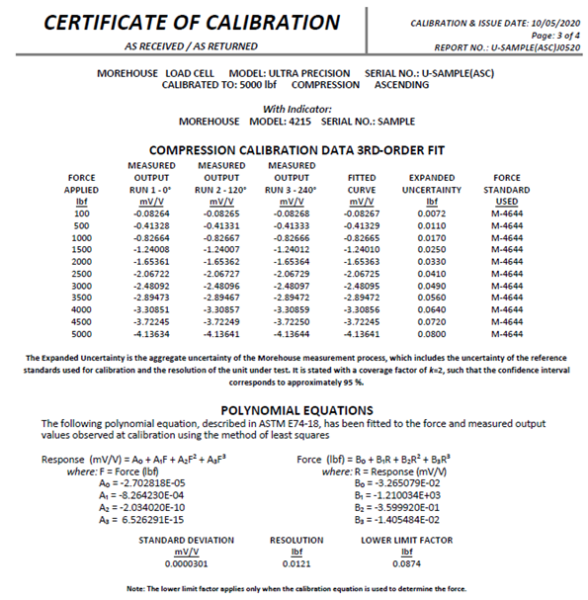
Figure 1: Morehouse Calibration Report with Two Sets of Coefficients
This article will examine coefficient equations and their uses. It includes a free-to-download Coefficient Calculator, which is an Excel spreadsheet where users can enter their calibration data to generate calibration coefficients. These coefficients can be programmed into several indicators, such as the Morehouse 4215 Plus, thus eliminating errors from using span points.
Coefficient Equations and Uses
There are two sets of coefficients and equations in the certificate shown above.
Equation 1: Response (mV/V) = A₀ + A₁F + A₂F² + A₃F³ where F = Force (lbf). It solves for Response when the Force is known.
When following the ASTM E74 standard, we get A coefficients. The A set of coefficients is often used by calibration laboratories to read the reference standards and then record a reading on the unit under test (UUT). First, they load to a specific value determined by the equation. Then they record the UUT reading. This calibration method is referred to as "Set to Force.” Hence, in the above example, if they wanted to apply 5,000 lbf of Force, then they would load the reference standard to -4.13641 mV/V.
Equation 2: Force (lbf) = B₀ + B₁R + B₂R² + B₃R³ where R = Response (mV/V). It solves for Force when the Response is known.
This second equation is often used when the technician, field engineer, or end-user is performing a calibration to ASTM E4 or ISO 7500. First, they load the UUT to a specific value. Then they record what the reference reads when the UUT is loaded to a force value. Hence, they would load the UUT to 5,000 lbf and record the mV/V value of the reference. This calibration method is referred to as "Follow the Force.”
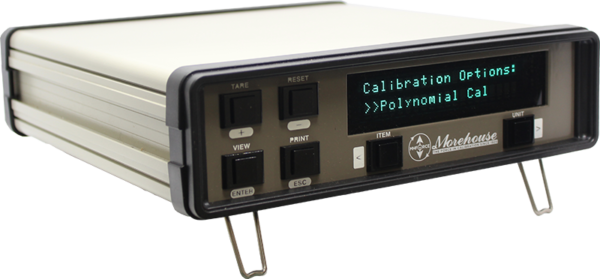
Figure 2 Morehouse 4215 Plus
However, the mV/V value needs to be converted to know if the measurements differ. An indicator like the 4215 Plus can store and use calibration coefficients to solve for Force. This is a good option when additional software is a concern.

Figure 3: Morehouse 4215 Plus Polynomial Screen to Enter B Coefficients
To learn more about coefficients, read our blog Understanding the Calibration Coefficients for Load Cells and Other Force-Measuring Devices.
Advantages of Using a Polynomial Equation to Solve for Force
Using the polynomial equation to solve for Force provides many advantages. One significant advantage is that the system's calibration can be done without additional adjustments. The Force is applied, and the measured value is recorded. The measured value is often recorded in mV/V. Then the equation is entered into an indicator such as the Morehouse 4215 Plus or software that converts the mV/V into force units.
The end-user does not incur adjustment costs, and the Response stays the same. Every calibration report has the same measured value in mV/V. It makes tracking the system’s stability from one calibration to the next very simple.
Another advantage is that higher-order coefficients can better depict the behavior of the force-measuring instrument, which is typically a load cell. Most indicators will allow the end-user to span or capture data points. Several indicators offer many ways to program points. Most of these are going to use some linear equation to display the non-programmed points along the curve or line.
When a linear equation is used, the measurement error can be quite similar to a higher-order equation.
Why would you Need B Coefficients?
The most important argument for using B coefficients is that the equation yields more exact measurements than other methods. Do not use multiple-span points when a better option is available. We have found significant errors using multiple span points instead of B coefficients. These errors range from 0.01 % to 0.06 %, as shown below. These errors are quite significant compared with errors less than 0.0001 % using the B coefficients generated from the Morehouse Coefficient Calculator and entered into the 4215 Plus indicator or other software that used the polynomial equation properly. To learn more, read our blog Converting an mV/V load cell signal into Engineering Units: Why this may be the most accurate and cost-effective way to use a calibration curve.
The other methods involve segmenting the line or using a straight line based on multiple span points, like this 5-point span calibration.

Figure 5: mV/V Values Entered into the 4215 Indicator
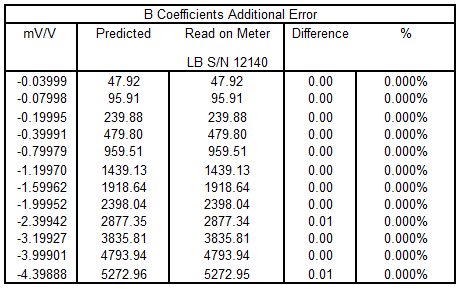
Figure 6: 5,000 lbf Morehouse Load Cell with B Coefficient Error
Until now, if a laboratory wanted to minimize error, they would either use an independent computer to take the load cell output and convert it into engineering units (lbf, kgf, or N) or use load tables or a spreadsheet to find the exact force point.
Not all Calibration Providers Issue B Coefficients
Since solving for Force is not part of many published calibration standards, it is not always provided. An excellent example of a calibration report without B coefficients is from NIST. It is fully compliant with ISO/IEC 17025 guidelines and the ASTM E74 standard. The report is excellent, and the coefficients listed are for solving for Response when Force is known, as required per the standard.
However, since solving for Force is something that many do not do, Morehouse is here to help anyone who wants to generate coefficients to solve for Force.
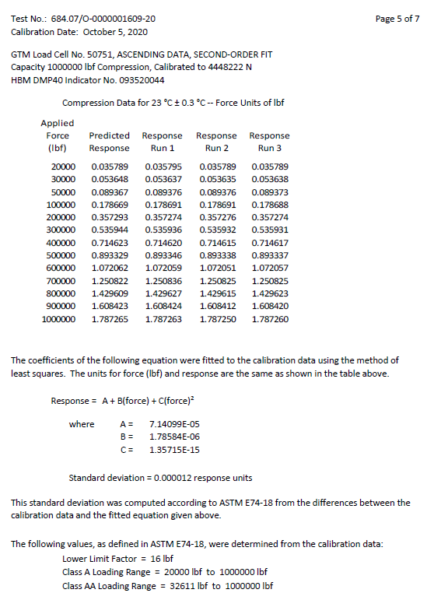
Figure 7: NIST Calibration Report Without B Coefficients
How to Generate B Coefficients Using Data from the Calibration Report
Above is an example of a NIST certificate with A coefficients only. There are ways in Excel to plot the Force versus Response using functions such as using this equation:
=LINEST(Force,Response^{1,2,3,})
In this equation, you would select the Force values and Response values. The problem with these equations is that they get you very close, but there is some other error. If we run this function on the above data, we get this string of numbers:
0.608689 -239.529 559962.9 -40.2586
When the output from the equation is simplified, these numbers become the coefficients below.
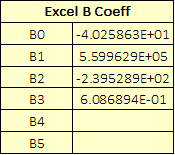
Morehouse Spreadsheet for Coefficients
Morehouse has simplified the Excel coding and developed it with the help of a good friend Greg Cenker at Indysoft. This equation is a bit more exact for generating polynomial equations. The equations are a bit more exact than the Excel Linest function, as shown in the most error column in Figure 6 below, equating to much less than one part per million. Examples are shown below using the NIST calibration report and generated coefficients for a second-degree and a third-order equation.
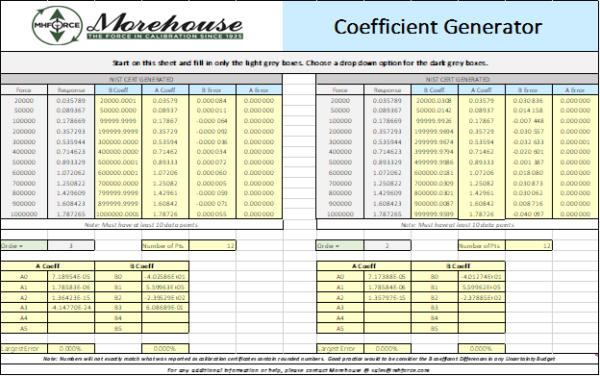
Figure 8: Morehouse Excel Coefficient Generator
The Morehouse coefficient generator will also convert force units to lbf, N, and kgf. Converting and solving for each set of coefficients can be a valuable tool in validating equations. It can be used to validate the polynomials are entered correctly into an indicator.
If you are interested, download the Coefficient Calculator spreadsheet.
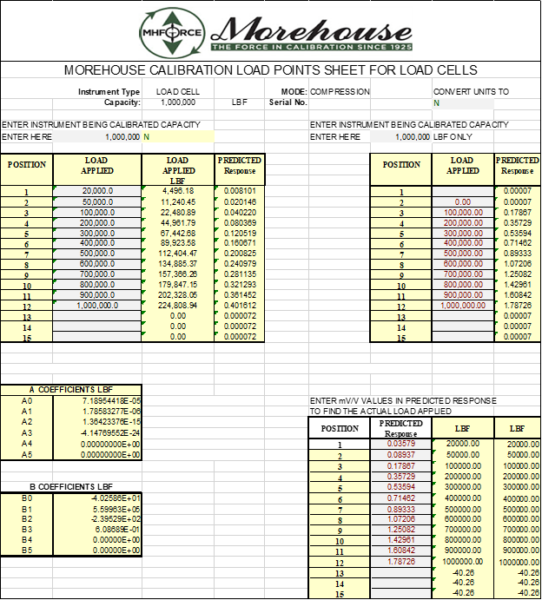
Figure 9: Morehouse Excel Sheet Showing NIST Cert Units Converted to N
How Do I Calculate B Coefficients Conclusion
Morehouse wants to help educate our customer base and provide tools to help the industry tools that answer How do I Calculate B Coefficients using Data from my Calibration Report? We hope more people will get away from span calibrations, start having equipment calibrated using the ASTM E74 or ISO 376 standard, and use indicators or other programs that can use the calibration coefficients generated from polynomial curve fits because the error is significantly less than that of using outdated methods of span calibrations.
The new Morehouse 4215 Plus indicator was developed as a standalone unit that does not require additional software to use the B coefficients and solve for Force. The coefficients are entered directly into the meter using the equation. There is no additional need for a computer and software, load tables, or additional calculations to benefit from using B coefficients.
I take great pride in our knowledgeable team at Morehouse, who will work with you to find the right solution. We have been in business for over a century and focus on being the most recognized name in the force business. That vision comes from educating our customers on what matters most having the proper discussions relating to force calibration basics so that everyone speaks the same language.
If you enjoyed this article, check out our LinkedIn and YouTube channel for more helpful posts and videos.
Everything we do, we believe in changing how people think about Force and torque calibration. We challenge the "just calibrate it" mentality by educating our customers on what matters, and what causes significant errors and focusing on reducing them.
In addition, Morehouse makes simple-to-use calibration products. We build fantastic force equipment that is plumb, level, square, rigid, and provide unparalleled calibration service with less than two-week lead times.
Contact us at 717-843-0081 to speak to a live person or email info@mhforce.com for more information.
#Calibration Coefficients
#How do I calculate B coefficients


